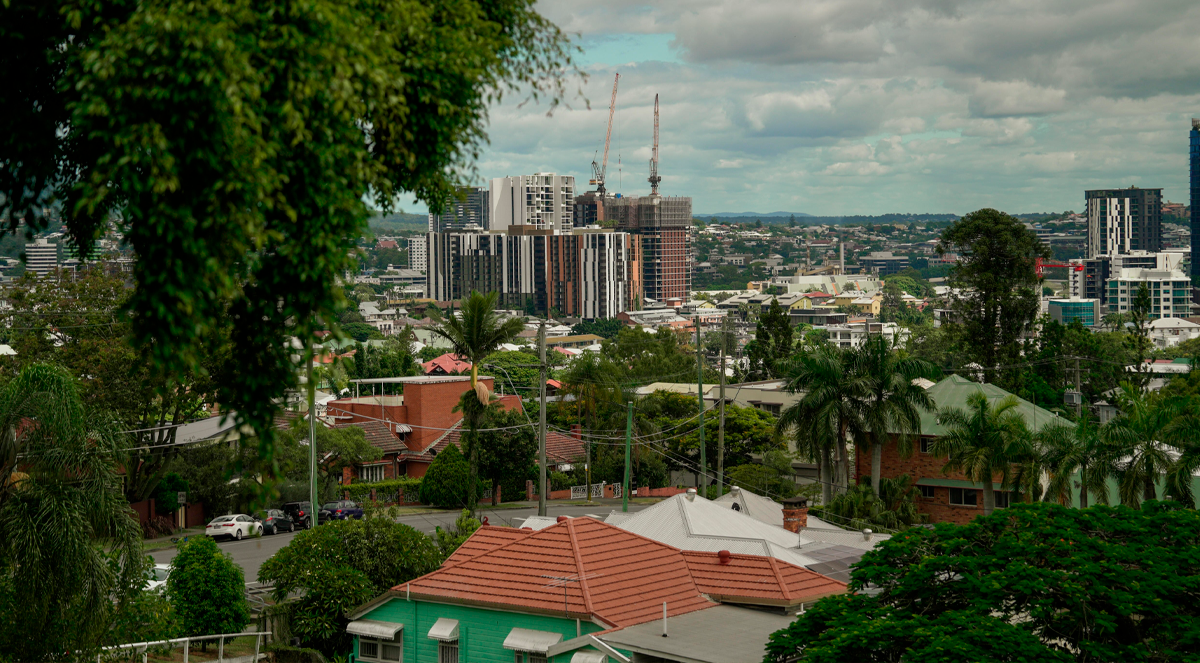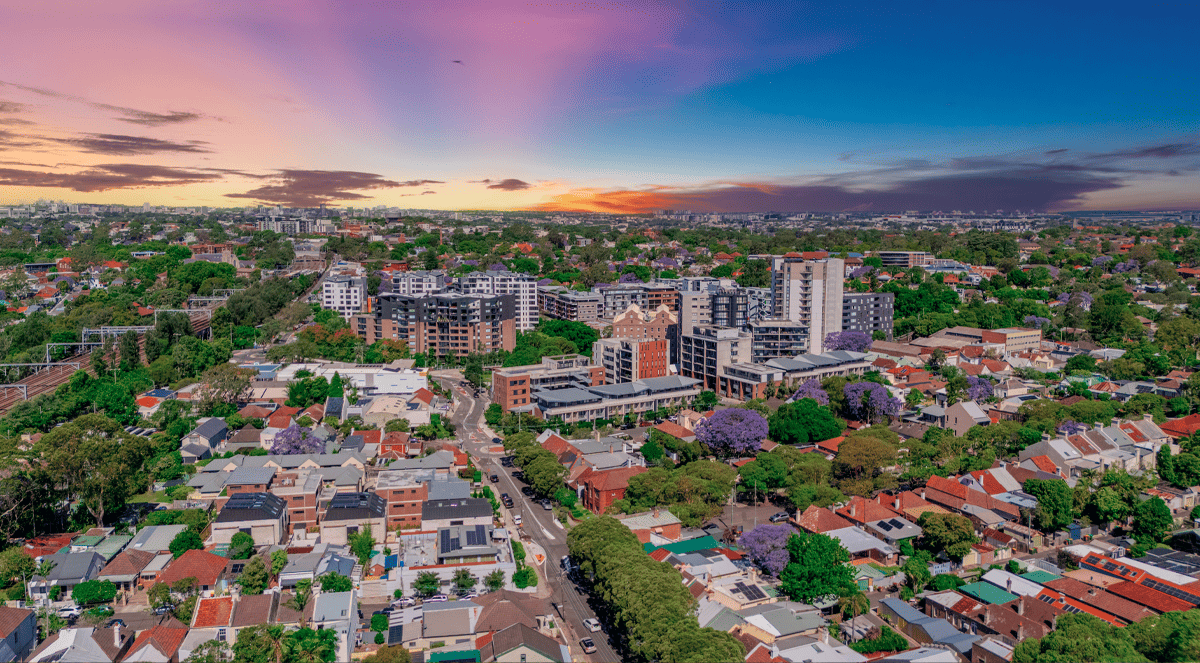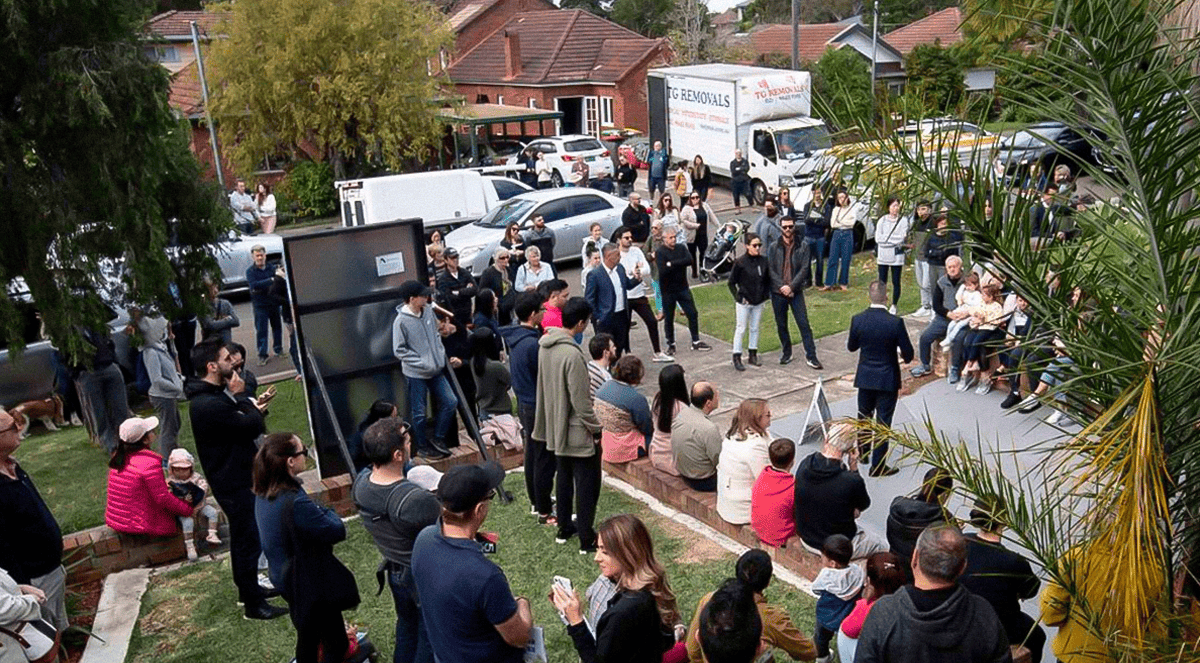Features > Property News & Insights > Market updates
“Too hard” to build houses in Australia: Albanese government
.png)
Image by Dan Himbrechts/AAP
KEY POINTS
- Prime Minister Albanese and Housing Minister O’Neil have acknowledged that excessive regulations and red tape have made home building in Australia overly difficult
- The Albanese government has pledged a national effort to streamline housing approvals and modernise construction methods
- Despite criticism and warnings of falling short, the Federal government remains committed to its ambitious goal of delivering 1.2 million new homes by mid-2029
Prime Minister Anthony Albanese says it’s currently “too hard” to build a house in Australia, citing onerous regulations and red tape.
Speaking at the National Press Club in Canberra, Mr Albanese said he agreed with the assessment of his Housing and Cities Minister, Clare O’Neil, who has said that "it's just too hard to build a house in this country.”
The details
.png?width=1159&height=611&name=BodyImage%20(2).png)
Faced with a housing crisis which has left the country between 200,000 and 300,000 homes short - according to calculations by AMP Chief Economist Shane Oliver - Anthony Albanese says that if governments “can cut through on some of the red tape, then that will reduce costs” for new housing.
“Developers say that it's just too complex, adds to costs as well,” he told the National Press Club.
“So, we have to look at ways in which we can bring costs down.”
Asked if he agreed with his Housing Minister that building a house in Australia “is just too hard” Mr Albanese replied, “It is too hard!”
Given that state regulations cover many planning and home building rules in Australia, Mr Albanese was also asked what he wanted “the states to do to make it easier to build a house in Australia.”
“The actions of state governments right around the country are very positive,” the PM replied.
Mr Albanese cited the “courage” of New South Wales Labor Premier Chris Minns, who championed a proposal to buy Sydney’s Rosehill racecourse for $5 billion and develop it into a new suburb with 25,000 homes.
The proposal was rejected by the racecourse’s owners, the Australian Turf Club.
“He (Chris Minns) was absolutely right in putting forward something that was controversial and in the end people knocked back, in spite of the fact it had the support of the leadership of the racing industry,” Anthony Albanese said.
“But that's the sort of thing that we're going to need to do.”
The Prime Minister’s remarks came a few days after his Housing and Cities Minister, Clare O’Neil, declared war on “red tape” holding back the development of more affordable housing in Australia.
In a series of media interviews, Ms O’Neil signalled she will lead a national push for the overhaul of unnecessary regulation governing housing construction.
“All three levels of government, over a 40-year period, have created a thicket of regulation which is giving the distinct impression to builders around the country that we don’t want them to build any more homes,” Ms O’Neil told the Financial Review, “And that is not the case.”
Her message in an interview with the ABC was similar.
"On their own, each piece (of regulation) makes sense.
“But when you put it together, builders face a ridiculous thicket of red tape that is preventing them from building the homes we need.
“And if we're going to tackle the fundamental problem — that Australia needs to build more homes, more quickly — we need to make a change."
Ms O’Neil says she’ll work with the states to go through the findings of a damning Productivity Commission report which found that housing construction has gone backwards in Australia over the last 30 years.
As Productivity Commissioner Danielle Wood put it when she released the report in February:
“We get about half as much house per hour of work as we did three decades ago.”
Housing and Cities Minister Clare O’Neil thinks another way of turning this plummeting productivity in the building industry around is by innovation.
“We are building housing the same way as we were doing 40 years ago,” she told the ABC.
“It has to change."
In another interview with The Australian newspaper, Ms O’Neil cited innovations like using robots to lay brickwork.
“It’s, in some instances, building parts of a home in a factory setting, and then taking them out to the site,” she said.
However, the Federal Opposition’s Housing spokesman, Andrew Bragg, accused Ms O’Neil of being “too silly for words”:
“Labor is the red tape champion: last parliament, Labor enacted 1500 new regulations in the Treasury and Infrastructure portfolios where housing policy resides,” he said.
“Labor’s killing the dream.”
With perhaps one eye on some of that criticism, the Albanese government has now centralised all housing policy into the Treasury portfolio.
The head of the Property Council, Mike Zorbas, says policies of previous Labor and Coalition governments are partly to blame for the housing crisis, but he’s trying to be positive.
“This Minister (Clare O’Neil), a year in the job next month, with the handbrake of a federal election in between, is showing an understanding of the costs and delay project proponents experience in Australia’s ever less productive planning regimes,” he says.
“Off the lowest of low bases, aspiring to multi-state, government process and outcomes improvements are welcome.
“The same approach on housing targets has already stirred more, synchronised, state efforts at planning reform than we would otherwise have seen this century,” Mr Zorbas says.
As to criticism of that housing target of building 1.2 million new well-located homes by mid-2029, Ms O’Neil says she’s still committed to the goal, despite analysts and industry groups warning Australia will fall anywhere up to 400,000 homes short.
“It is going to be hard and I’m glad that we’ve set such an ambitious target,” Ms O’Neil told The Australian.
“It is a goal that is meant to galvanise change to our housing system, not just a number that we’ve dreamt up by adding up how many houses we thought we would build anyway.
“It is going to be a real challenge, but I’m very focused on trying to get there.”
Stay Up to Date
with the Latest Australian Property News, Insights & Education.




.png?width=292&height=292&name=Copy%20Link%20(1).png)
 SIGN UP FOR FREE NEWSLETTER
SIGN UP FOR FREE NEWSLETTER





.jpg?width=1920&height=1080&name=Warning%2c%20You%20Might%20Be%20Facing%20Higher%20Taxes%20Soon%20(1).jpg)





.png?width=1920&height=1080&name=Rate%20Drops%20Signal%20BIGGEST%20Property%20Boom%20in%20DECADES%20(1).png)

.jpg?width=1920&height=1080&name=Labor%20vs%20Liberal%20These%20Housing%20Policies%20Could%20Change%20the%20Property%20Market%20Forever%20(1).jpg)
.jpg?width=1920&height=1080&name=QLD%20Slashes%20Stamp%20Duty%20Big%20News%20for%20Investors%20%26%20Home%20Buyers%20(1).jpg)
.jpg?width=1920&height=1080&name=Trump%20Just%20Slapped%20Tariffs%20%E2%80%93%20Here%E2%80%99s%20What%20It%20Means%20for%20Australia%20(1).jpg)
.jpg?width=1920&height=1080&name=Federal%20Budget%202025%20More%20Debt%2c%20No%20Housing%20%E2%80%93%20Here%E2%80%99s%20What%20You%20Need%20to%20Know%20(1).jpg)
.jpg?width=1920&height=1080&name=Australias%20Housing%20Crisis%20is%20about%20to%20get%20MUCH%20Worse%20(New%20Data%20Warns).jpg)
%20(1).jpg?width=1920&height=1080&name=Australias%20RENTAL%20CRISIS%20Hits%20ROCK%20BOTTOM!%20(2025%20Update)%20(1).jpg)
%20(1).png?width=1920&height=1080&name=Is%20Adelaide%20Still%20a%20Good%20Property%20Investment%20(2025%20UPDATE)%20(1).png)
.jpg?width=1920&height=1080&name=RBA%20Shocks%20with%20Rate%20Cuts!%20What%E2%80%99s%20Next%20for%20Property%20Investors%20(1).jpg)
%20(1).jpg?width=1920&height=1080&name=I%20Predict%20The%20Feb%20Rate%20Cut%20(My%20Price%20Growth%20Prediction)%20(1).jpg)
.png?width=1920&height=1080&name=Why%20Property%20Prices%20Will%20Rise%20in%202025%20Market%20Predictions%20(1).png)
.jpg?width=1920&height=1080&name=Why%20Investors%20Are%20Choosing%20Apartments%20Over%20Houses%202%20(1).jpg)
.jpg?width=1920&height=1080&name=Why%20Rate%20Cuts%20Will%20Trigger%20A%20Property%20Boom%20(1).jpg)
.jpg?width=1920&height=1080&name=Retire%20On%202Million%20With%20One%20Property%20(Using%20SMSF).jpg)
.jpg?width=1920&height=1080&name=4%20Reasons%20Why%20You%20Should%20Invest%20in%20Melbourne%20Now%20(1).jpg)
%20(1).jpg?width=1920&height=1080&name=Old%20Property%20vs%20New%20Property%20(Facts%20and%20Figures%20Revealed)%20(1).jpg)
%20(1).jpg?width=1920&height=1080&name=Will%20The%20New%20QLD%20Govt%20Create%20a%20Property%20Boom%20or%20Bust%20(My%20Prediction)%20(1).jpg)
%20Scott%20Kuru%20(1).jpg?width=1920&height=1080&name=Inflation%20Hits%20Three-Year%20Low%20(Will%20RBA%20Cut%20Rates%20Soon)%20Scott%20Kuru%20(1).jpg)
.jpg?width=1920&height=1080&name=How%20to%20Buy%20Investment%20Property%20Through%20SMSF_%20The%20Ultimate%20Guide%20(1).jpg)
.jpg?width=1920&height=1080&name=Victoria%20Slashes%20Stamp%20Duty%20Melbourne%20Set%20to%20Boom%20Scott%20Kuru%20(1).jpg)
.png?width=1571&height=861&name=Are%20Foreign%20Buyers%20Really%20Driving%20Up%20Australian%20Property%20Prices%20(1).png)
.jpg?width=1920&height=1080&name=The%20Single%20Factor%20That%20Predicts%20Property%20Growth%20Regions%20(1).jpg)
%20Scott%20Kuru%20(1).jpg?width=1920&height=1080&name=My%20Prediction%20On%20Rates%20%26%20Negative%20Gearing%20(Market%20Crash)%20Scott%20Kuru%20(1).jpg)

-1.png?width=1920&height=1080&name=Major%20Banks%20Cut%20Rates%20Will%20RBA%20Follow%20Suit%20(Sept%20Rate%20Update)-1.png)
%20Scott%20Kuru-1.png?width=1920&height=1080&name=Rate%20Cut%20Coming%20What%20New%20Zealands%20Move%20Means%20for%20Australia%20(Sept%20Prediction)%20Scott%20Kuru-1.png)
%20(1).jpg?width=1920&height=1080&name=Buy%20when%20the%20interest%20rates%20are%20high!%20(Why%20you%20must%20buy%20now!)%20(1).jpg)
.jpg?width=1920&height=1080&name=Carms_Revised%20Taxes%20Due%20Aug%209%20YT%20Thumbnail02%20(1).jpg)
.jpg?width=1920&height=1080&name=Carms_Too%20Little%20Too%20Late%20Aug%207%20YT%20Thumbnail01%20(1).jpg)









.jpg?width=1920&height=1080&name=Carms_Rate%20Drop%20In%20July%20Jun%2010%20YT%20Thumbnail02%20(1).jpg)
.jpg?width=1920&height=1080&name=Carms_Own%20a%20Property%20V6%20Jun%205_YT%20Thumbnail%20(1).jpg)









.png?width=1920&height=1080&name=Artboard%201%20(3).png)






.jpg?width=1920&height=1080&name=YT%20thumbnail%20%20(1).jpg)

